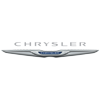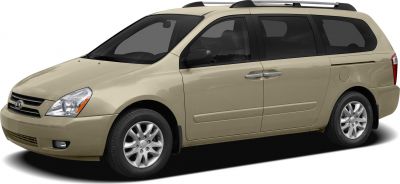 1996 Chrysler Voyager III Dimensions, Size & Specs
1996 Chrysler Voyager III Dimensions, Size & SpecsMeasurements of the 1996 Chrysler Voyager III, engineered for optimal performance and comfort
| Dimensions | |
|---|---|
| Length: | 4733 mm186.3 in15.5 ft |
| Width: | 1950 mm76.8 in6.4 ft |
| Height: | 1740 mm68.5 in5.7 ft |
| Trunk Capacity: | 450 liter15.9 cu ft |
| Trunk Capacity (Max): | 1439 liter50.8 cu ft |
| Weight Specifications | |
| Curb Weight: | 1705-2000 kg3759-4409 lbs |
| Maximal permitted Weight: | 2385-2600 kg5258-5732 lbs |
| Tire Specifications | |
| Tire Sizes: |
|
The Chrysler Voyager III, produced between 1995 and 2000, represents a popular third-generation minivan designed to combine spaciousness with practical utility. The 1996 model year of the Voyager III features a body length of 4733 millimeters (approximately 186.3 inches), a width of 1950 millimeters (about 76.8 inches), and a height of 1740 millimeters (68.5 inches). This size layout offers a roomy interior suitable for families and cargo alike. The curb weight of the vehicle ranges from 1705 to 2000 kilograms (3759 to 4409 pounds), depending on trim and equipment levels, with a maximum gross vehicle weight ranging from 2385 to 2600 kilograms (5259 to 5732 pounds), allowing it to carry passengers and gear efficiently. Luggage capacity stands at 450 liters (roughly 15.9 cubic feet) behind the rear seats, expanding significantly to 1439 liters (50.8 cubic feet) when the rear seats are folded down, demonstrating its adaptability for various cargo needs. The tire specifications for the Voyager III include 215/65 R15 and 215/65 R15 T, ensuring good traction and ride comfort expected in a vehicle of its class. Overall, the Chrysler Voyager III of the 1996 model year stands out as a versatile minivan option with well-balanced dimensions and capacities, making it a relevant choice for those seeking a reliable family transport with ample space and practicality.
Discover the standout features that make the 1996 Chrysler Voyager III a leader in its class
Have a question? Please check our knowledgebase first.
The Chrysler Voyager III, produced from 1995 to 2000, measures approximately 4733 mm (186.3 inches) in length, 1950 mm (76.8 inches) in width, and 1740 mm (68.5 inches) in height. These dimensions position the Voyager III as a spacious minivan, providing good interior volume and road presence suitable for family use and comfortable passenger transport.
The curb weight of the 1996 Chrysler Voyager III ranges between 1705 kg (3759 lbs) to 2000 kg (4409 lbs), depending on the specific trim and equipment options. The maximum weight the vehicle can handle, including passengers and cargo, varies from 2385 kg (5259 lbs) to 2600 kg (5732 lbs). This weight range ensures the Voyager III can accommodate typical family loads with adequate stability and performance.
The luggage capacity of the Chrysler Voyager III is 450 liters (about 15.9 cubic feet) with all rear seats in place, providing reasonable space for daily shopping and smaller luggage. When the rear seats are folded down, the luggage volume increases significantly to 1439 liters (approximately 50.8 cubic feet), allowing for larger cargo loads such as camping gear, furniture, or extensive travel luggage.
The Chrysler Voyager III typically comes equipped with 215/65 R15 tires or 215/65 R15 T tires. These tire sizes offer a balanced combination of comfort, grip, and durability, suitable for the minivan's intended urban and suburban use with moderate load carrying capability.
The Chrysler Voyager III, with its length of 4733 mm (186.3 inches) and width of 1950 mm (76.8 inches), will fit into most standard single-car garages, which typically range from 4800 mm to 5500 mm (approximately 190 to 216 inches) in length and around 2400 mm (94.5 inches) in width. However, space might be tight inside the garage for opening doors and maneuvering, so it's advisable to ensure your garage has sufficient clearance beyond just parking the vehicle.
Compared to the Voyager II, the Voyager III is generally longer, wider, and taller, offering increased interior space and a more commanding road presence. While the Voyager II had more compact dimensions, the Voyager III's growth in size translates to enhanced passenger comfort and cargo capacity. The increased curb and maximum weights also reflect its larger size and upgraded structural design.
Dimensionally, the Chrysler Voyager III is quite competitive within its minivan segment during the mid to late 1990s. Its length of 4733 mm (186.3 inches) and width of 1950 mm (76.8 inches) are slightly larger than the Dodge Caravan and similar to the Honda Odyssey of the era, which typically measured around 4600-4800 mm in length and 1900 mm in width. The Voyager III stands out with its spacious interior and generous luggage capacity, making it an attractive option for families needing a practical and roomy vehicle.
The 1996 Chrysler Voyager III is classified as a minivan, designed primarily for families or groups requiring versatile passenger and cargo space. Known for its sliding rear doors, flexible seating arrangements, and user-friendly interior, the Voyager III focuses on practicality and comfort. It is suitable for daily commuting, road trips, and carrying larger loads, making it a popular choice in its class throughout its production years from 1995 to 2000.
The Chrysler Voyager III’s weight ranging from 1705 kg to 2000 kg (3759 to 4409 lbs) gives it a solid road feel but also requires a corresponding powertrain capable of managing its mass efficiently. Its size contributes to stable highway driving and comfortable interior space but could mean less agility in tight urban environments or parking situations. Buyers should consider their driving needs, especially if frequent city driving is involved, but for family transportation and longer journeys, the Voyager III provides a good balance of size and performance.
The Chrysler Voyager III is well-suited for individuals or families needing significant passenger capacity along with adaptable cargo space. Its ability to hold 450 liters of luggage space with seats up, expanding to 1439 liters with seats folded, makes it versatile for grocery runs, sports equipment, or vacation luggage. The vehicle’s size and weight characteristics ensure safe and comfortable transport, while the minivan design offers practical sliding doors and seating flexibility uncommon in SUVs or sedans of its era.
Discover similar sized cars.

| Model Year: | 2006 |
|---|---|
| Length: | 4810 mm189.4 in |
| Width: | 1985 mm78.1 in |
| Height: | 1815 mm71.5 in |

| Production: | 2019-present |
|---|---|
| Model Year: | 2019 |
| Length: | 4706 mm185.3 in |
| Width: | 1909 mm75.2 in |
| Height: | 1690-1713 mm66.5-67.4 in |

| Production: | 2007-2016 |
|---|---|
| Model Year: | 2008 |
| Length: | 4808 mm189.3 in |
| Width: | 1997 mm78.6 in |
| Height: | 1803 mm71.0 in |
